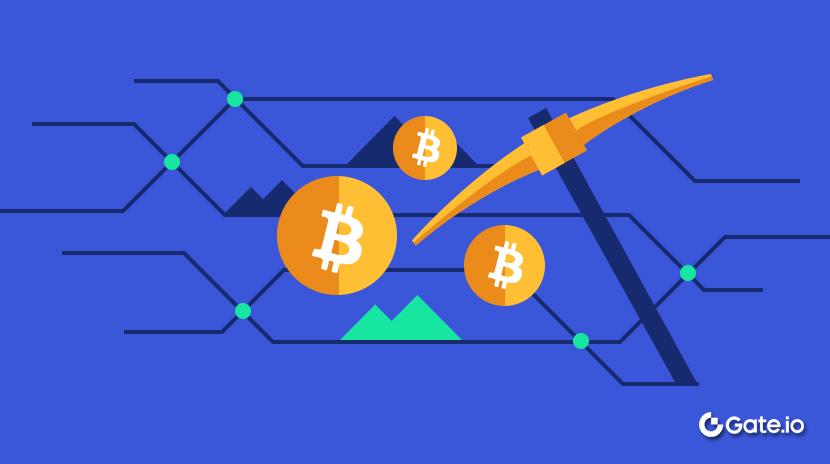Đằng sau ‘Beautiful Bill’: Một thử nghiệm tài chính biến thặng dư của Kho bạc Hoa Kỳ thành stablecoin
Tại Điện Capitol của Hoa Kỳ, một dự luật được biết đến với tên gọi "Luật Đẹp" đang được thúc đẩy nhanh chóng. Báo cáo mới nhất của Deutsche Bank mô tả nó là "Kế hoạch Pennsylvania" cho Hoa Kỳ nhằm giải quyết khoản nợ khổng lồ của mình—bằng cách yêu cầu mua trái phiếu kho bạc Hoa Kỳ bằng stablecoin, tích hợp đô la kỹ thuật số vào hệ thống tài chính nợ quốc gia.
Dự luật này hình thành một sự kết hợp chính sách với "Đạo luật GENIUS", đã yêu cầu tất cả các stablecoin USD phải được bảo đảm 100% bằng tiền mặt, trái phiếu Kho bạc Hoa Kỳ hoặc tiền gửi ngân hàng. Nó đánh dấu một sự chuyển biến cơ bản trong quy định về stablecoin. Dự luật yêu cầu các nhà phát hành stablecoin duy trì dự trữ tỷ lệ 1:1 USD hoặc tài sản có tính thanh khoản cao (như trái phiếu Kho bạc ngắn hạn của Hoa Kỳ) và cấm các stablecoin thuật toán trong khi thiết lập một khuôn khổ quy định kép ở cấp liên bang và tiểu bang. Các mục tiêu của nó rất rõ ràng:
- Giảm áp lực lên Trái phiếu Kho bạc Hoa Kỳ: Phân bổ bắt buộc tài sản dự trữ stablecoin vào thị trường Trái phiếu Kho bạc Hoa Kỳ. Theo dự báo của Bộ Tài chính Hoa Kỳ, giá trị thị trường stablecoin toàn cầu sẽ đạt 2 nghìn tỷ USD vào năm 2028, với 1,6 nghìn tỷ USD chảy vào Trái phiếu Kho bạc Hoa Kỳ, cung cấp một kênh tài chính mới cho thâm hụt ngân sách của Hoa Kỳ.
- Củng cố sự thống trị của Đồng Đô La: Hiện tại, 95% stablecoin được gắn với đồng đô la, và luật pháp tạo ra một vòng khép kín "Đô La → Stablecoin → Thanh Toán Toàn Cầu → Trả Nợ Mỹ," củng cố "quyền lực đúc tiền trên chuỗi" của đồng đô la trong nền kinh tế số.
- Thúc đẩy kỳ vọng về việc cắt giảm lãi suất: Một báo cáo của Deutsche Bank chỉ ra rằng việc thông qua dự luật gây áp lực lên Cục Dự trữ Liên bang để cắt giảm lãi suất nhằm giảm chi phí tài chính của trái phiếu Kho bạc Hoa Kỳ, đồng thời hướng dẫn đồng đô la yếu đi và nâng cao sức cạnh tranh của hàng xuất khẩu của Hoa Kỳ.
Nút thắt nợ của Mỹ, stablecoin trở thành công cụ chính sách
Tổng nợ liên bang ở Hoa Kỳ đã vượt quá 36 triệu đô la, với việc trả gốc và lãi lên tới 9 triệu đô la vào năm 2025. Đối mặt với "đập nợ" này, chính quyền Trump cần khẩn trương mở ra các kênh tài chính mới. Trong khi đó, stablecoin, một đổi mới tài chính từng bị bỏ qua ở rìa quy định, bất ngờ trở thành cứu cánh của Nhà Trắng.
Theo tín hiệu từ Hội thảo Quỹ Tiền tệ Boston, các stablecoin đang được nuôi dưỡng như "những người mua mới" trên thị trường Kho bạc Hoa Kỳ. Yie-Hsin Hung, Giám đốc điều hành của State Street Global Advisors, cho biết: "Stablecoin đang tạo ra nhu cầu mới đáng kể cho thị trường Kho bạc."
Con số tự nó đã nói lên: tổng giá trị thị trường hiện tại của stablecoin là 256 tỷ đô la, trong đó khoảng 80% được phân bổ cho trái phiếu kho bạc Hoa Kỳ hoặc thỏa thuận mua lại, tổng cộng khoảng 200 tỷ đô la. Mặc dù nó chiếm chưa đến 2% thị trường trái phiếu kho bạc Hoa Kỳ, nhưng tỷ lệ tăng trưởng của nó đã thu hút sự chú ý của các tổ chức tài chính truyền thống.
Citibank dự đoán rằng đến năm 2030, giá trị thị trường của stablecoin sẽ đạt từ 1,6 triệu tỷ đô la đến 3,7 triệu tỷ đô la, vào thời điểm đó quy mô của trái phiếu Kho bạc Hoa Kỳ do các nhà phát hành nắm giữ sẽ vượt quá 1,2 triệu tỷ đô la. Khối lượng này đủ để đứng trong số những người nắm giữ trái phiếu Kho bạc Hoa Kỳ lớn nhất.
Do đó, stablecoin đã trở thành một công cụ mới cho việc quốc tế hóa đồng đô la Mỹ. Ví dụ, các stablecoin hàng đầu như USDT và USDC nắm giữ gần 200 tỷ đô la trái phiếu kho bạc Mỹ, chiếm 0,5% nợ quốc gia của Mỹ. Nếu quy mô mở rộng lên 2 nghìn tỷ đô la (với 80% được phân bổ cho trái phiếu kho bạc Mỹ), số lượng nắm giữ sẽ vượt qua bất kỳ quốc gia nào. Cơ chế này có thể:
- Thị trường tài chính méo mó: Nhu cầu trái phiếu Kho bạc Hoa Kỳ ngắn hạn tăng vọt, đè nén lợi suất và làm dốc đường cong lợi suất, suy yếu hiệu quả của chính sách tiền tệ truyền thống.
- Nới lỏng kiểm soát vốn tại các thị trường mới nổi: Dòng chảy xuyên biên giới của stablecoin vượt qua hệ thống ngân hàng truyền thống, làm suy yếu khả năng can thiệp vào tỷ giá hối đoái (như đã thấy trong cuộc khủng hoảng năm 2022 ở Sri Lanka do dòng vốn ra nước ngoài).
Bill scalpel, kỹ thuật tài chính cho trọng tài quy định
"Đạo luật Grand Act tuyệt đẹp" và Đạo luật GENIUS tạo thành một sự kết hợp chính sách tinh vi. Đạo luật sau đóng vai trò như một khuôn khổ quy định, yêu cầu các stablecoin hoạt động như "người mua" trái phiếu Kho bạc Hoa Kỳ; đạo luật trước cung cấp các động lực phát hành, tạo ra một vòng khép kín hoàn chỉnh.
Thiết kế cốt lõi của dự luật chứa đầy sự khôn ngoan chính trị: khi người dùng mua stablecoin với 1 đô la, nhà phát hành phải sử dụng 1 đô la đó để mua trái phiếu Kho bạc Hoa Kỳ. Điều này không chỉ đáp ứng yêu cầu tuân thủ mà còn đạt được mục tiêu tài chính công. Tether, với tư cách là nhà phát hành stablecoin lớn nhất, đã mua ròng 33,1 tỷ đô la trái phiếu Kho bạc Hoa Kỳ vào năm 2024, trở thành người mua trái phiếu Kho bạc Hoa Kỳ lớn thứ bảy trên thế giới.
Hệ thống phân cấp quy định tiết lộ một ý định rõ ràng hơn để hỗ trợ các thế lực độc quyền: các stablecoin có vốn hóa thị trường trên 10 tỷ đô la được chính phủ liên bang quản lý trực tiếp, trong khi các người chơi nhỏ hơn được để lại cho các cơ quan cấp bang. Thiết kế này thúc đẩy sự tập trung thị trường, với Tether (USDT) và Circle (USDC) hiện đang chiếm hơn 70% thị phần.
Dự luật cũng bao gồm các điều khoản độc quyền: nó cấm các stablecoin không phải đồng đô la Mỹ lưu hành tại Mỹ trừ khi chúng phải tuân theo quy định tương đương. Điều này vừa củng cố sự thống trị của đồng đô la vừa mở đường cho stablecoin USD1 được hỗ trợ bởi gia đình Trump - đồng coin này đã nhận được cam kết đầu tư 2 tỷ đô la từ công ty đầu tư Abu Dhabi MGX.
Chuỗi chuyển nợ, nhiệm vụ cứu trợ của stablecoin
Vào nửa cuối năm 2025, thị trường trái phiếu kho bạc Mỹ sẽ đối mặt với sự gia tăng nguồn cung lên đến 1 nghìn tỷ đô la. Đối mặt với cơn lũ này, các nhà phát hành stablecoin dự kiến sẽ đóng một vai trò quan trọng. Mark Cabana, người đứng đầu chiến lược lãi suất tại Bank of America, đã chỉ ra: “Nếu Kho bạc chuyển sang tài trợ nợ ngắn hạn, sự gia tăng nhu cầu do stablecoin mang lại sẽ cung cấp cho Bộ trưởng Tài chính không gian chính sách.”
Thiết kế cơ chế rất tinh xảo:
- Đối với mỗi 1 đô la stablecoin được phát hành, 1 đô la trái phiếu kho bạc Mỹ ngắn hạn phải được mua, tạo ra một kênh tài trợ trực tiếp.
- Sự gia tăng nhu cầu đối với stablecoin chuyển thành sức mua của các tổ chức, giảm bớt sự không chắc chắn trong tài trợ của chính phủ.
- Các nhà phát hành buộc phải liên tục tăng cường tài sản dự trữ của họ, tạo ra một vòng yêu cầu tự củng cố.
Adam Ackermann, người quản lý danh mục đầu tư tại công ty fintech Paxos, đã tiết lộ rằng một số ngân hàng quốc tế hàng đầu đang thảo luận về sự hợp tác stablecoin, hỏi về "cách để ra mắt một giải pháp stablecoin trong vòng tám tuần." Sự nhiệt tình của ngành công nghiệp đã đạt đến đỉnh điểm.
Nhưng chi tiết mới là điều quan trọng: stablecoin chủ yếu được neo vào trái phiếu kho bạc Mỹ ngắn hạn, không cung cấp sự trợ giúp đáng kể nào cho sự mất cân bằng cung-cầu của trái phiếu kho bạc Mỹ dài hạn. Hơn nữa, quy mô hiện tại của stablecoin vẫn không đáng kể so với các khoản thanh toán lãi suất trái phiếu kho bạc Mỹ — tổng thị trường stablecoin toàn cầu là 232 tỷ đô la, trong khi lãi suất hàng năm trên trái phiếu kho bạc Mỹ vượt quá 1 nghìn tỷ đô la.
Sự gia tăng của chủ nghĩa hegemony đô la mới và chủ nghĩa thực dân trên chuỗi
Chiến lược sâu xa hơn của dự luật nằm ở việc nâng cấp kỹ thuật số của sự thống trị đồng đô la. 95% stablecoin toàn cầu được gắn với đồng đô la, tạo ra một "mạng lưới đô la bóng" bên ngoài hệ thống ngân hàng truyền thống.
Các doanh nghiệp vừa và nhỏ ở Đông Nam Á, châu Phi và các khu vực khác sử dụng USDT cho các chuyển tiền xuyên biên giới, vượt qua hệ thống SWIFT, giảm chi phí giao dịch hơn 70%. Sự "đô la hóa không chính thức" này thúc đẩy sự thâm nhập của đồng đô la vào các thị trường mới nổi.
Tác động sâu sắc hơn nằm ở cuộc cách mạng về mô hình của hệ thống thanh toán quốc tế:
- Việc thanh toán bằng đô la truyền thống phụ thuộc vào các mạng lưới ngân hàng liên ngân hàng như SWIFT.
- Stablecoins được nhúng trong các hệ thống thanh toán phân tán khác nhau dưới dạng "đô la on-chain."
- Khả năng thanh toán bằng đô la Mỹ phá vỡ ranh giới của các tổ chức tài chính truyền thống, đạt được sự nâng cấp trong "địa vị kỹ thuật số".
Liên minh Châu Âu đã rõ ràng nhận thức được mối đe dọa. Quy định MiCA của nó hạn chế các chức năng thanh toán hàng ngày của các stablecoin không phải euro và áp đặt lệnh cấm phát hành đối với các stablecoin quy mô lớn. Ngân hàng Trung ương Châu Âu đang tăng tốc việc thúc đẩy đồng euro kỹ thuật số, nhưng tiến độ vẫn chậm.
Hồng Kông đã áp dụng một chiến lược phân biệt: trong khi thiết lập một hệ thống cấp phép stablecoin, họ dự định giới thiệu một hệ thống cấp phép kép cho giao dịch qua quầy và dịch vụ lưu ký. Cơ quan Tiền tệ cũng dự định phát hành các hướng dẫn vận hành cho việc token hóa tài sản thế giới thực (RWA) nhằm thúc đẩy việc tích hợp trên chuỗi của các tài sản truyền thống như trái phiếu và bất động sản.
Mạng lưới truyền tải rủi ro, đếm ngược bom hẹn giờ
Dự luật chôn vùi ba rủi ro cấu trúc:
Lớp đầu tiên: Kho bạc Hoa Kỳ - Vòng xoáy chết của stablecoin. Nếu người dùng đồng loạt đổi USDT, Tether phải bán Kho bạc Hoa Kỳ để lấy tiền mặt → Giá Kho bạc Hoa Kỳ giảm mạnh → Các dự trữ stablecoin khác mất giá → Sụp đổ hoàn toàn. Vào năm 2022, USDT đã tạm thời mất liên kết do hoảng loạn trên thị trường, và những sự kiện tương tự trong tương lai có thể ảnh hưởng đến thị trường Kho bạc Hoa Kỳ do quy mô của tình huống.
Lớp thứ hai: Các rủi ro của tài chính phi tập trung được khuếch đại. Sau khi stablecoin chảy vào hệ sinh thái DeFi, chúng được sử dụng đòn bẩy thông qua khai thác thanh khoản, cho vay và hoạt động staking. Cơ chế restaking khiến tài sản bị staking lại nhiều lần qua các giao thức khác nhau, dẫn đến sự khuếch đại rủi ro theo cấp số nhân. Khi giá trị của các tài sản cơ sở giảm mạnh, điều này có thể kích hoạt một cuộc thanh lý chuỗi.
Lớp thứ ba: mất độc lập trong chính sách tiền tệ. Một báo cáo của Deutsche Bank chỉ ra rằng dự luật sẽ "gây áp lực lên Cục Dự trữ Liên bang để cắt giảm lãi suất." Chính quyền Trump gián tiếp thu được "quyền in tiền" thông qua stablecoin, điều này có thể làm suy yếu sự độc lập của Cục Dự trữ Liên bang—Powell gần đây đã từ chối áp lực chính trị, gợi ý rằng việc cắt giảm lãi suất vào tháng Bảy là không có khả năng.
Càng làm cho vấn đề phức tạp, tỷ lệ nợ trên GDP của Hoa Kỳ đã vượt quá 100%, và rủi ro tín dụng của chính nợ của Hoa Kỳ đang gia tăng. Nếu lãi suất nợ của Hoa Kỳ tiếp tục đảo ngược hoặc xuất hiện kỳ vọng vỡ nợ, thuộc tính nơi trú ẩn an toàn của stablecoin sẽ gặp nguy hiểm.
Trò chơi cờ vua mới toàn cầu, sự tái tạo trên chuỗi của trật tự kinh tế
Trước những hành động của Mỹ, thế giới đang hình thành ba trại lớn:
- Trại Tích Hợp Quy Định: Các cơ quan quản lý ngân hàng Canada đã thông báo rằng họ đã sẵn sàng để điều chỉnh stablecoin, với một khuôn khổ đang được phát triển. Điều này phản ánh các xu hướng quy định ở Hoa Kỳ, hình thành một tình huống hợp tác Bắc Mỹ. Coinbase sẽ ra mắt các hợp đồng vĩnh viễn theo phong cách Mỹ vào tháng Bảy, sử dụng stablecoin để thanh toán các tỷ lệ tài trợ.
- Đổi mới trong Trại Phòng thủ: Hồng Kông và Singapore trình bày sự khác biệt trong con đường quy định. Hồng Kông áp dụng cách tiếp cận thắt chặt thận trọng, định vị coin ổn định như "thay thế ngân hàng ảo"; trong khi đó, Singapore triển khai "hộp cát coin ổn định" cho phép phát hành thử nghiệm. Sự khác biệt này có thể kích thích trọng tài quy định và làm yếu đi sức cạnh tranh tổng thể của châu Á.
- Trại thay thế: Ở những quốc gia có lạm phát cao, công chúng coi stablecoin là "tài sản trú ẩn an toàn", làm yếu đi sự lưu thông của đồng tiền địa phương và hiệu quả của chính sách tiền tệ của ngân hàng trung ương. Những quốc gia này có thể tăng tốc phát triển stablecoin địa phương hoặc các dự án cầu nối tiền tệ kỹ thuật số đa phương, nhưng họ phải đối mặt với những thách thức thương mại nghiêm trọng.
Và hệ thống quốc tế cũng sẽ trải qua những thay đổi: từ một cực sang một "kiến trúc lai", đề xuất cải cách hiện tại trình bày ba con đường:
- Liên minh Tiền tệ Đa dạng (xác suất cao nhất): đô la Mỹ, euro và nhân dân tệ hình thành một đồng tiền dự trữ ba bên, được bổ sung bởi một hệ thống thanh toán khu vực (chẳng hạn như hoán đổi tiền tệ đa phương ASEAN).
- Cạnh tranh trong Tiền tệ Kỹ thuật số: 130 quốc gia đang phát triển Tiền tệ Kỹ thuật số của Ngân hàng Trung ương (CBDCs), và đồng nhân dân tệ kỹ thuật số đã bắt đầu các chương trình thí điểm cho thương mại xuyên biên giới, điều này có thể định hình lại hiệu quả thanh toán nhưng phải đối mặt với thách thức về việc chuyển giao chủ quyền.
- Phân mảnh cực đoan: Nếu các xung đột địa chính trị leo thang, điều này có thể dẫn đến một trại phân chia giữa đô la Mỹ, euro và các đồng tiền BRICS, dẫn đến sự gia tăng chi phí thương mại toàn cầu.
Giám đốc điều hành PayPal, Alex Chriss, đã chỉ ra một nút thắt quan trọng: "Từ góc độ người tiêu dùng, hiện tại không có động lực thực sự nào để thúc đẩy việc áp dụng stablecoin." Công ty đang triển khai một cơ chế thưởng để giải quyết vấn đề áp dụng, trong khi các sàn giao dịch phi tập trung như XBIT đang giải quyết các vấn đề về niềm tin thông qua hợp đồng thông minh.
Báo cáo của Deutsche Bank dự đoán rằng với việc triển khai "Kế hoạch Lớn Đẹp", Cục Dự trữ Liên bang sẽ buộc phải cắt giảm lãi suất, dẫn đến sự suy yếu đáng kể của đồng đô la. Đến năm 2030, khi stablecoin nắm giữ 1,2 nghìn tỷ đô la trái phiếu Kho bạc Hoa Kỳ, hệ thống tài chính toàn cầu có thể đã âm thầm hoàn thành việc tái cấu trúc trên chuỗi—sự thống trị của đồng đô la Mỹ được nhúng trong mọi giao dịch trên blockchain dưới dạng mã, trong khi rủi ro được phân tán đến mọi người tham gia thông qua một mạng lưới phi tập trung.
Đổi mới công nghệ chưa bao giờ là một công cụ trung lập. Khi đồng đô la Mỹ khoác lên mình bộ áo của blockchain, trò chơi của trật tự cũ đang được diễn ra trên một chiến trường mới!
Tuyên bố:
- Bài viết này được đăng lại từ [TechFlow] Bản quyền thuộc về tác giả gốc [Mask, W3C DAO] Nếu bạn có bất kỳ phản đối nào đối với việc tái bản, vui lòng liên hệ Đội ngũ Gate LearnĐội ngũ sẽ xử lý nó càng sớm càng tốt theo các quy trình liên quan.
- Tuyên bố từ chối trách nhiệm: Các quan điểm và ý kiến được trình bày trong bài viết này hoàn toàn là của tác giả và không cấu thành bất kỳ lời khuyên đầu tư nào.
- Các phiên bản ngôn ngữ khác của bài viết được dịch bởi đội ngũ Gate Learn, trừ khi có đề cập khác.GateTrong bất kỳ trường hợp nào cũng không được phép sao chép, phát tán hoặc đạo văn các bài viết đã được dịch.
Bài viết liên quan

Tronscan là gì và Bạn có thể sử dụng nó như thế nào vào năm 2025?

Coti là gì? Tất cả những gì bạn cần biết về COTI

Stablecoin là gì?

Mọi thứ bạn cần biết về Blockchain

HODL là gì
